-
 Bitcoin
Bitcoin $105,128.3815
3.90% -
 Ethereum
Ethereum $2,416.0020
7.44% -
 Tether USDt
Tether USDt $1.0005
0.02% -
 XRP
XRP $2.1746
8.78% -
 BNB
BNB $639.2755
3.53% -
 Solana
Solana $144.4068
7.70% -
 USDC
USDC $1.0000
-0.01% -
 TRON
TRON $0.2729
1.26% -
 Dogecoin
Dogecoin $0.1628
6.63% -
 Cardano
Cardano $0.5826
7.56% -
 Hyperliquid
Hyperliquid $37.1757
6.20% -
 Sui
Sui $2.7783
11.64% -
 Bitcoin Cash
Bitcoin Cash $462.3940
2.42% -
 Chainlink
Chainlink $13.1350
11.22% -
 UNUS SED LEO
UNUS SED LEO $9.1304
0.83% -
 Stellar
Stellar $0.2476
8.34% -
 Avalanche
Avalanche $18.0617
6.94% -
 Toncoin
Toncoin $2.9043
3.64% -
 Shiba Inu
Shiba Inu $0.0...01161
7.29% -
 Hedera
Hedera $0.1515
11.26% -
 Litecoin
Litecoin $84.2187
3.78% -
 Monero
Monero $313.8446
4.70% -
 Ethena USDe
Ethena USDe $1.0006
0.03% -
 Polkadot
Polkadot $3.4344
6.81% -
 Dai
Dai $0.9999
0.00% -
 Bitget Token
Bitget Token $4.2647
5.88% -
 Uniswap
Uniswap $6.9164
11.66% -
 Pepe
Pepe $0.0...09897
10.79% -
 Pi
Pi $0.5326
6.57% -
 Aave
Aave $259.4000
13.30%
Is the mild enlargement of the Yang line at the bottom a signal for building a position?
A mildly enlarged Yang line at the bottom may signal early bullish reversal in crypto, showing easing sell pressure and cautious buyer entry.
Jun 24, 2025 at 10:56 am
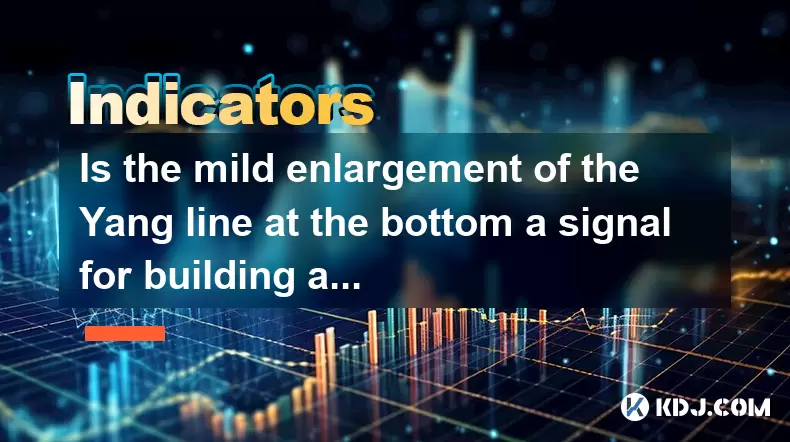
Understanding the "Mild Enlargement of the Yang Line at the Bottom"
In technical analysis within the cryptocurrency market, candlestick patterns are often used to predict price movements. The "Yang line" refers to a bullish candlestick, typically represented by a green or hollow body, indicating that the closing price is higher than the opening price. When traders refer to a "mild enlargement of the Yang line at the bottom," they are describing a scenario where a small bullish candle appears after a downtrend and begins to show signs of increasing volume or length compared to previous candles.
This pattern may suggest that selling pressure is beginning to ease and buyers are stepping in cautiously. However, it's important to distinguish between a genuine reversal signal and a temporary bounce within a larger downtrend. In crypto trading, such signals should be analyzed alongside other indicators like volume, moving averages, and RSI (Relative Strength Index) to confirm whether it’s a reliable entry point.
How to Identify the Mild Enlargement of the Yang Line
Recognizing this pattern involves several key criteria:
- The candle must appear after a clear downtrend.
- The body of the candle should be slightly longer than the preceding bearish candles but not necessarily very large.
- There should be a noticeable increase in volume during the formation of this candle.
- The wick lengths should be relatively short, suggesting strong buying interest throughout the period.
- It should be followed by a confirmation candle—preferably another bullish candle—to validate the potential reversal.
Traders often use tools like TradingView or Binance’s native charting system to highlight these patterns visually. For instance, you can apply candlestick pattern recognition scripts or manually draw support lines near the area where this candle forms.
What This Pattern Suggests About Market Sentiment
The appearance of a mildly enlarged Yang line at the bottom indicates a shift in sentiment from bearish to neutral or potentially bullish. During a downtrend, sellers dominate the market, pushing prices lower with each successive candle. When a stronger-than-usual bullish candle emerges, it shows that buyers are starting to absorb the selling pressure.
In the context of cryptocurrencies, which are known for high volatility and emotional trading behavior, this could mean that institutional players or whales are accumulating assets at discounted levels. Retail traders might also start entering positions if they perceive value at current price levels.
It's crucial to understand that this pattern alone doesn't guarantee a reversal. Instead, it serves as a potential early warning sign that the downtrend may be losing momentum.
Steps to Confirm the Signal Before Building a Position
Before taking any position based on this pattern, traders should go through a multi-step confirmation process:
- Check the surrounding candles: Ensure that the prior trend was indeed bearish and sustained.
- Analyze volume: Look for an increase in trading volume during and after the formation of the Yang line. Rising volume confirms buyer interest.
- Use moving averages: Overlay 50-period and 200-period EMAs to see if the price is approaching or bouncing off key moving average levels.
- Monitor RSI and MACD: If RSI crosses above 30 or shows divergence from the price, it could indicate strengthening momentum. Similarly, a MACD crossover above the signal line adds to the bullish case.
- Wait for a follow-through candle: A strong bullish candle immediately following the mild Yang line strengthens the validity of the reversal.
Only when multiple indicators align should a trader consider initiating a position.
Risk Management When Entering Based on This Signal
Even with proper confirmation, trading based on candlestick patterns carries risk. Therefore, implementing solid risk management strategies is essential:
- Set a stop-loss order just below the low of the Yang line to limit downside exposure.
- Limit position size to a fraction of your total portfolio—typically no more than 1–3% per trade.
- Use trailing stops once the trade moves in your favor to lock in profits while allowing room for the trend to develop.
- Avoid over-leveraging, especially in highly volatile markets like crypto derivatives.
By applying these principles, traders can protect their capital even if the pattern fails to result in a full reversal.
Frequently Asked Questions (FAQ)
Q: Can the mild enlargement of the Yang line occur mid-trend and still be meaningful?
A: Yes, though its significance changes. In a mid-trend context, it may act as a continuation pattern rather than a reversal. Confirmation becomes even more critical in such cases.
Q: Is this pattern equally reliable across all cryptocurrencies?
A: No, larger-cap coins like Bitcoin and Ethereum tend to form more reliable candlestick patterns due to higher liquidity and less manipulation compared to smaller altcoins.
Q: Should I only rely on candlestick patterns for entry signals?
A: No, candlestick patterns should always be used in conjunction with other technical indicators and volume analysis to increase the probability of successful trades.
Q: What time frame is best for identifying this pattern?
A: While it can appear on any time frame, it's most effective on higher time frames like 4-hour or daily charts, where false signals are less frequent.
Disclaimer:info@kdj.com
The information provided is not trading advice. kdj.com does not assume any responsibility for any investments made based on the information provided in this article. Cryptocurrencies are highly volatile and it is highly recommended that you invest with caution after thorough research!
If you believe that the content used on this website infringes your copyright, please contact us immediately (info@kdj.com) and we will delete it promptly.
- XRP Price Surge: Latest News and Analysis – Can XRP Reach New Heights?
- 2025-06-24 20:45:12
- Stablecoin Surge in South Korea: Kakao Pay's Venture and the Stock Rally
- 2025-06-24 20:25:13
- Unstaked Presale Heats Up as SHIB Evolves & Toncoin GameFi Takes Aim
- 2025-06-24 21:05:12
- DOT Miners, Middle East, and Investors: Navigating Uncertainty
- 2025-06-24 20:25:13
- Bitcoin Purchasing in 2025: A New Yorker's Guide to the Crypto Craze
- 2025-06-24 21:05:13
- Blockchain Stocks, Decentralized World, and Profit: Navigating the Future of Finance
- 2025-06-24 21:25:12
Related knowledge
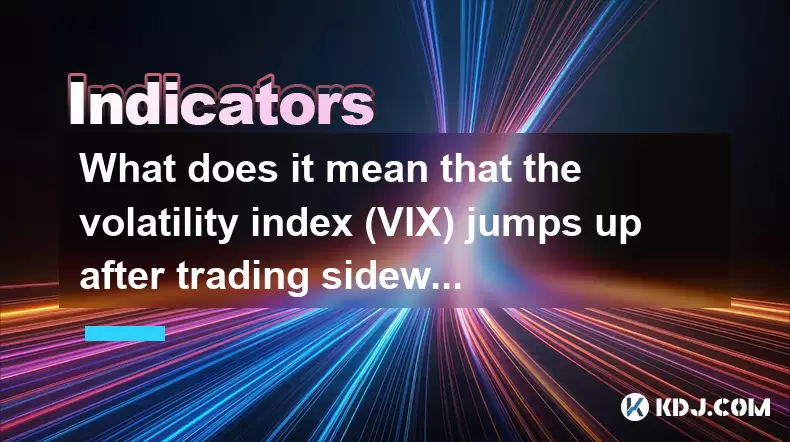
What does it mean that the volatility index (VIX) jumps up after trading sideways at a low level?
Jun 24,2025 at 09:35pm
Understanding the Volatility Index (VIX)The Volatility Index (VIX), often referred to as the 'fear gauge,' is a real-time market index that represents the market's expectation of 30-day forward-looking volatility. It is calculated by the Chicago Board Options Exchange (CBOE) based on the price inputs of S&P 500 index options. In the context of cryptocur...

What does it mean when the stochastic indicator repeatedly fluctuates at the 50 horizontal line?
Jun 24,2025 at 09:08pm
Understanding the Stochastic Indicator in Cryptocurrency TradingThe stochastic indicator is a popular momentum oscillator used by traders to identify potential trend reversals and overbought or oversold conditions. In cryptocurrency trading, where price movements can be highly volatile, understanding how this tool behaves becomes crucial for making info...
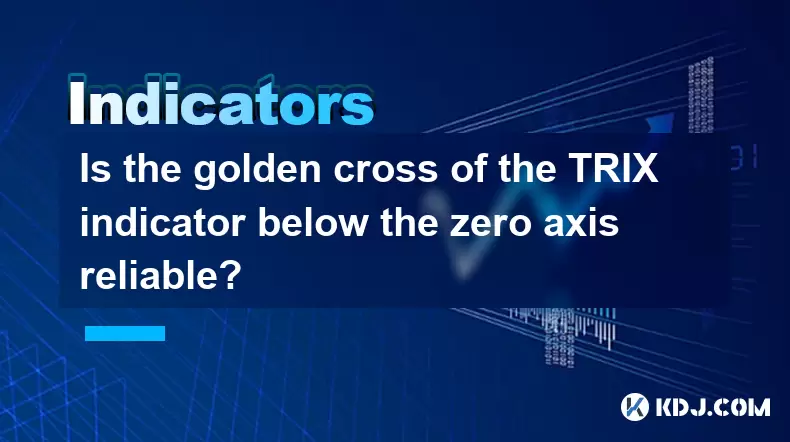
Is the golden cross of the TRIX indicator below the zero axis reliable?
Jun 24,2025 at 09:22pm
Understanding the TRIX Indicator and Its SignificanceThe TRIX (Triple Exponential Moving Average) indicator is a momentum oscillator used in technical analysis to identify oversold or overbought conditions, as well as potential trend reversals. It is calculated by smoothing price data three times using exponential moving averages and then taking the per...
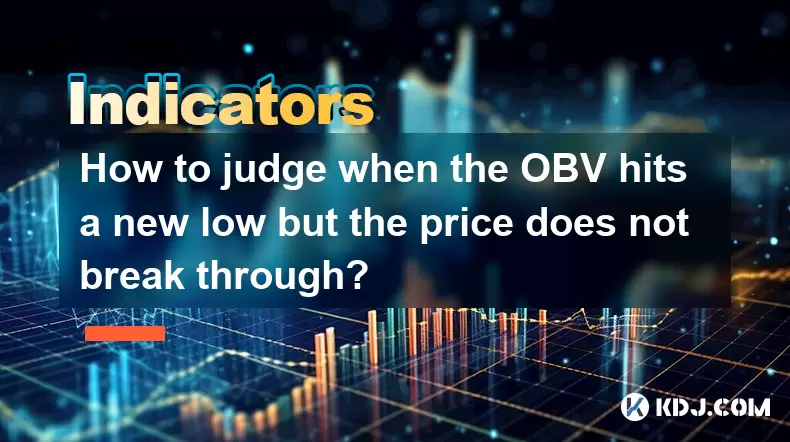
How to judge when the OBV hits a new low but the price does not break through?
Jun 24,2025 at 07:56pm
Understanding the Basics of OBV and Price ActionOn-Balance Volume (OBV) is a momentum indicator that uses volume flow to predict changes in stock or cryptocurrency prices. The core principle behind OBV is that volume often precedes price movement. When OBV hits a new low, but the price does not break through its previous support level, this can indicate...
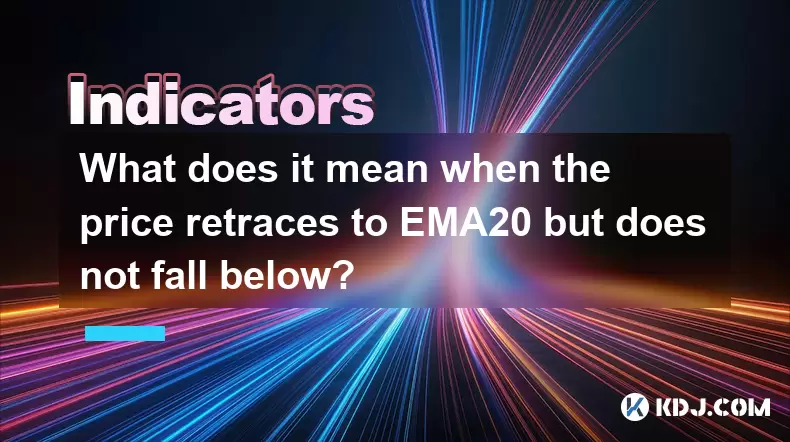
What does it mean when the price retraces to EMA20 but does not fall below?
Jun 24,2025 at 08:49pm
Understanding the EMA20 Indicator in Cryptocurrency TradingThe Exponential Moving Average (EMA) with a 20-period setting, commonly referred to as EMA20, is one of the most widely used technical indicators in cryptocurrency trading. It gives more weight to recent price data, making it more responsive to current price movements compared to simple moving a...
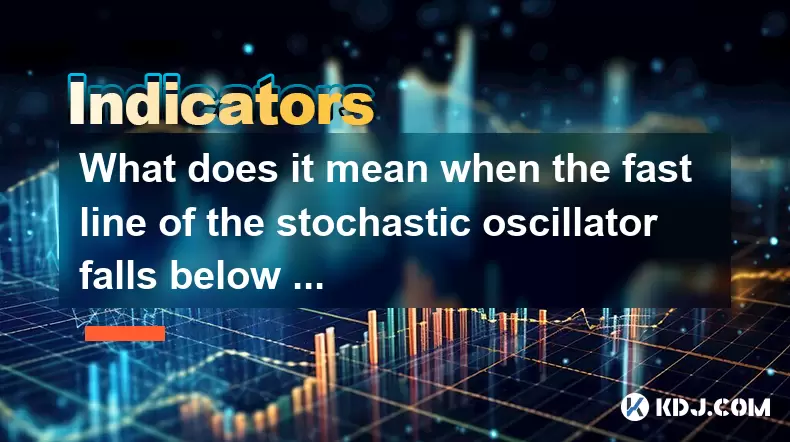
What does it mean when the fast line of the stochastic oscillator falls below the slow line?
Jun 24,2025 at 07:07pm
Understanding the Stochastic OscillatorThe stochastic oscillator is a momentum indicator used in technical analysis to assess overbought or oversold conditions in financial markets, including cryptocurrencies. It consists of two lines: the fast line (typically %K) and the slow line (typically %D). The fast line represents the current closing price relat...

What does it mean that the volatility index (VIX) jumps up after trading sideways at a low level?
Jun 24,2025 at 09:35pm
Understanding the Volatility Index (VIX)The Volatility Index (VIX), often referred to as the 'fear gauge,' is a real-time market index that represents the market's expectation of 30-day forward-looking volatility. It is calculated by the Chicago Board Options Exchange (CBOE) based on the price inputs of S&P 500 index options. In the context of cryptocur...

What does it mean when the stochastic indicator repeatedly fluctuates at the 50 horizontal line?
Jun 24,2025 at 09:08pm
Understanding the Stochastic Indicator in Cryptocurrency TradingThe stochastic indicator is a popular momentum oscillator used by traders to identify potential trend reversals and overbought or oversold conditions. In cryptocurrency trading, where price movements can be highly volatile, understanding how this tool behaves becomes crucial for making info...

Is the golden cross of the TRIX indicator below the zero axis reliable?
Jun 24,2025 at 09:22pm
Understanding the TRIX Indicator and Its SignificanceThe TRIX (Triple Exponential Moving Average) indicator is a momentum oscillator used in technical analysis to identify oversold or overbought conditions, as well as potential trend reversals. It is calculated by smoothing price data three times using exponential moving averages and then taking the per...

How to judge when the OBV hits a new low but the price does not break through?
Jun 24,2025 at 07:56pm
Understanding the Basics of OBV and Price ActionOn-Balance Volume (OBV) is a momentum indicator that uses volume flow to predict changes in stock or cryptocurrency prices. The core principle behind OBV is that volume often precedes price movement. When OBV hits a new low, but the price does not break through its previous support level, this can indicate...

What does it mean when the price retraces to EMA20 but does not fall below?
Jun 24,2025 at 08:49pm
Understanding the EMA20 Indicator in Cryptocurrency TradingThe Exponential Moving Average (EMA) with a 20-period setting, commonly referred to as EMA20, is one of the most widely used technical indicators in cryptocurrency trading. It gives more weight to recent price data, making it more responsive to current price movements compared to simple moving a...

What does it mean when the fast line of the stochastic oscillator falls below the slow line?
Jun 24,2025 at 07:07pm
Understanding the Stochastic OscillatorThe stochastic oscillator is a momentum indicator used in technical analysis to assess overbought or oversold conditions in financial markets, including cryptocurrencies. It consists of two lines: the fast line (typically %K) and the slow line (typically %D). The fast line represents the current closing price relat...
See all articles
























































































